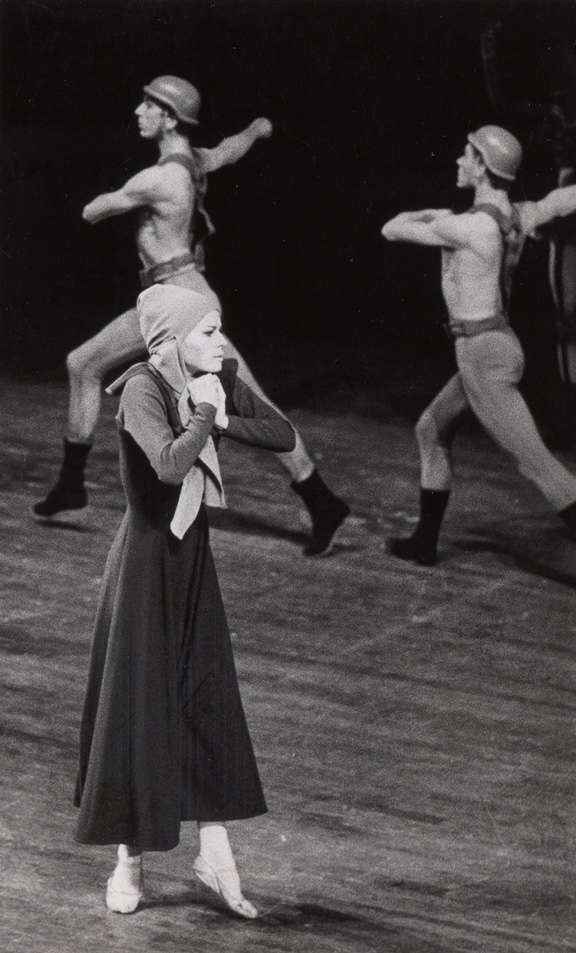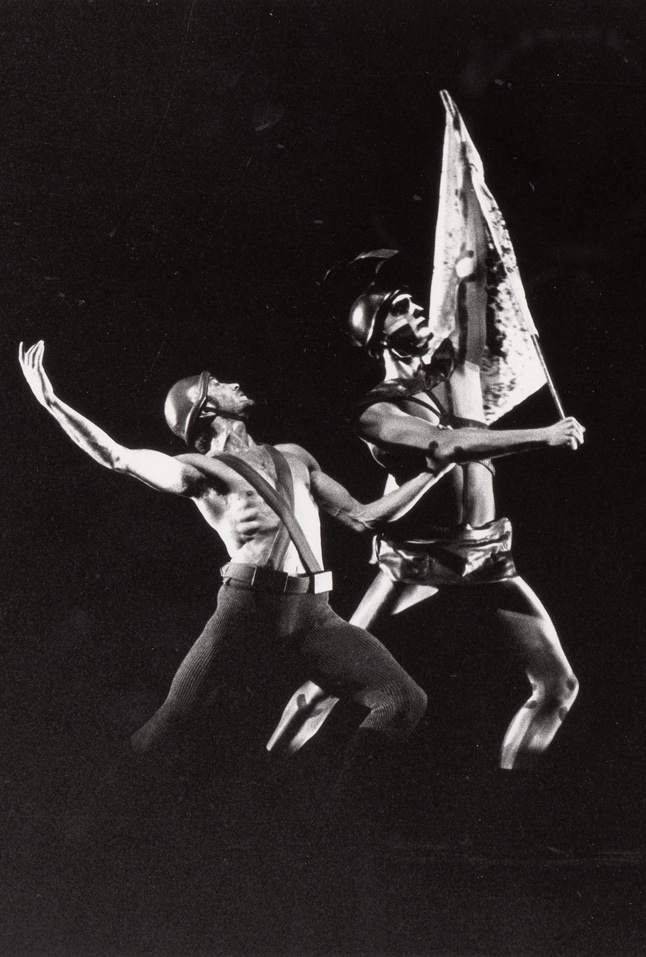
The Green Table: keeping a masterpiece alive
Interview with Jeanette Vondersaar
Author: Astrid van Leeuwen
She finds it incredibly sad, but Kurt Jooss’ The Green Table is unfortunately still relevant, especially at the moment. According to Jeanette Vondersaar, it is therefore extremely important that Dutch National Ballet performs Jooss’ ‘anti-war ballet’ right now, when a terrible war is raging in Europe.
As a former principal dancer with Dutch National Ballet, she often performed the role of the partisan in the ballet. Later on, she assisted Jooss’ daughter, Anna Markard, in staging the work, and since Markard’s death in 2010, Vondersaar has been responsible for keeping this masterpiece ‘alive’.
Jeanette Vondersaar, born in Indianapolis, America, was sixteen when she first saw The Green Table, as a ballet student in New York. “The ballet made a deep impression on me, particularly the role of Death, who takes the lives of civilians and soldiers in the piece. The power of his performance is almost terrifying, like an army tank trundling downstage. If someone had told me at the time that I’d be handing down the ballet to future generations at some point, I’d never have believed them.”
Vondersaar danced with Dutch National Ballet from 1976 to 1997, in the rank of principal dancer from 1977. She regularly danced the role of the partisan in The Green Table. “It’s a fantastic role, and it really suited my energy and temperament.” Once, she even worked with Kurt Jooss himself. “We idolised him. Not just for the discipline and precision demanded by his choreography, which gives meaning to each detail, but also for the fact that he dared to make such a strong statement between two world wars.” Most of the time, however, Vondersaar worked on the ballet with Anna Markard, the German choreographer’s eldest daughter.
‘This is a huge honour, but also a tremendous responsibility’
Food for thought
When Dutch National Ballet filmed The Green Table for television in 1996, Markard gave her a choice: either she could dance the role of the partisan one more time or she could assist Markard with the staging. “It was difficult to choose, but eventually I decided on the latter. That decision proved to be a turning point for my future and the reason why I’ve been working since then on preserving this masterpiece, which is so important to dance history. Over the years, Anna also had other assistants, but unlike them I made The Green Table my top priority. For almost fifteen years, Anna and I staged the ballet and other works by Jooss throughout Europe, in Japan and in many cities in the United States. Anna was both my mentor and my friend.”
Over the years, Markard became more and more impressed by Vondersaar’s knowledge of The Green Table, and before her death in 2010, Vondersaar promised her to take on the task of perpetuating Markard's father’s magnum opus. “It’s a huge honour, but also a tremendous responsibility. Because unfortunately we’re seeing again today the atrocities induced by war and conflict. The Green Table gives people plenty of food for thought. The fate of refugees, people who profit from war, the futility of violence: Jooss incorporated all of that into his ballet. So it’s my job to ensure the work is performed at the highest possible standard, because only then does it have the intended effect.”


Seeing, rather than looking
Ninety years after its premiere in Germany, when Nazism was on the rise, The Green Table is still affecting people, says Vondersaar. “Its universal and timeless message escapes no one.” She admits that from a technical point of view the ballet is probably dated. “Today’s audiences are used to seeing lots of pirouettes, big jumps and high extensions”, she says. “But it’s precisely the subdued nature of the work that makes it so impressive. In this case, less is more – and that demands ultimate control from the dancers.”
She knows from experience that this control is difficult for the present generation of dancers. “The Green Table is all about inner expression. You’re conveying an important message, so every movement and every gesture is essential. If you reach your arm out to somebody, for example, that movement has to be charged with energy. You have to really express something with your arms, and convey something to people very sincerely and purely. That sort of detail demands tremendous focus from the dancers. You need to be aware not only of yourself and your dance partner, but of everything and everyone around you. You have to see, rather than look.”
So at the start of the rehearsal process, she tells the dancers, “You’re going to have to be patient with me – and I with you.” This is because, “There’s a meaning behind each step, and I analyse the best way to convey that meaning for each dancer individually.”
‘This has to go on’
On 3 July 2022, it was exactly ninety years since the premiere of The Green Table at the Théâtre des Champs-Élysées, in Paris. “I hope I’m still around for the centenary”, says Vondersaar, who is now 71. In recent years, she has been staging the ballet in collaboration with the Italian ballet master Claudio Schellino, whose enormous dedication she ‘discovered’ when she rehearsed The Green Table with Saarländisches Staatstheater, in Saarbrücken. “This collaboration is important, not only because my age now prevents me demonstrating all the movements, but also because the available rehearsal time is being cut back all over the world. When I started out with Anna Markard, we could count on a total of a hundred hours over at least a six-week period for staging The Green Table. Nowadays, you’re happy if you get four weeks to set the work.”
But with Schellino already at the age of 60, Vondersaar is once again looking for a new successor. “We’ve got our eye on a young person in their forties, who is working in Portugal at the moment. Because come what may, this has to go on. We absolutely have to keep this dance masterpiece alive.”